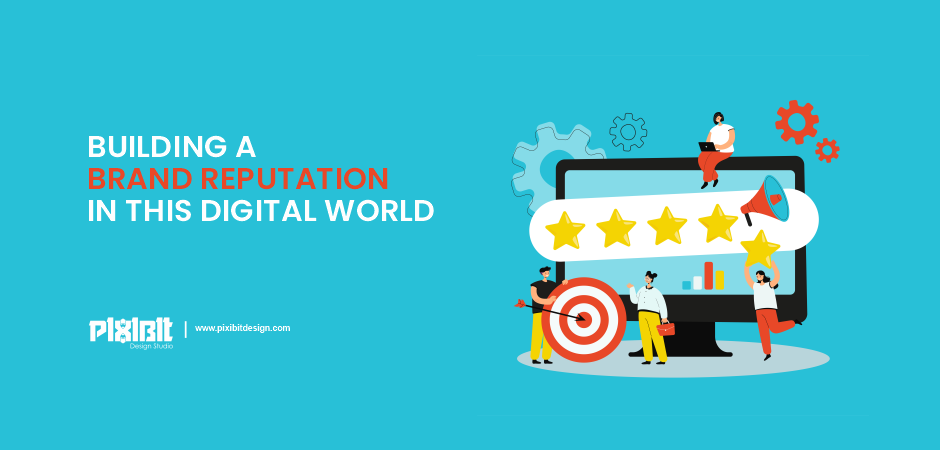

Introduction
A brand is built to flourish in our digital world. Managing your brand successfully has become more crucial as the internet continues to grow and its influence increases.
An effective brand is a crucial component of any company. It’s what sets a company apart from its competitors in the marketplace and how its customers view it. In this digital world, brand management has become very difficult. With a competitive market and changing expectations, a company can find itself fighting hard to be competitive or even survive.
The extreme popularity of social media is both a boon and a curse for brands. Such as getting to launch new products, running promotions, and take advantage of seasonal trends at the same time, and engaging with loyal customers in a more personal way are the pros of the digital age.
At the same time, there lies a very high risk of potential brand infringement by online scammers, hackers, impersonators, etc that sometimes results in huge damages to the reputation of the company.
But regardless of the disadvantages, social media is a powerful marketing tool that helps you put a human on your brand and connect with your customers on a more personal level. Today you need to promote and protect your brand across the massive social media landscape.
Branding, marketing, and advertising all are the tools that you use to help promote your business. As one flourishes to push the boundaries with marketing activities in this fast digital environment, one needs to make sure that one maintains the fundamentals of brand building for long-term success.
This means it’s of the most important to build healthy doses of social responsibility and brand accountability. In the digital age, brand marketing is highly competitive and more essential than ever.
3 key elements contributed to the shift in brand reputation management in the last 10 years:
- Speed of communication: traditional media lead time as compared to the ability to communicate all time. The speed with which news and information travel, places more pressure on both tracking issues and the speed of response required.
- The scale of media: previously brands had to deal with a manageable number of media outlets, now with social media anyone with an offense or comment can reach a massive audience. Stories are no longer contained and go global.
- Variety of partners in media that brands have to deal with: It was only mainstream journalists before, however, today it’s a completely different situation, there’s a vast formation of different media channels and a huge collection of bloggers, and influencers.
With the increase in social media and connectivity, all it takes is one negative comment to destroy a company’s reputation. For instance, when Netflix experienced a service outage during the summer of 2013, customers took to Twitter to voice their frustration. In less than an hour, thousands voiced their complaints. The company eventually tweeted that they were working on the issue, but that didn’t stop the attack of tweets.
As a result, Netflix’s reputation took a hit and its stock prices decreased. While a service outage is certainly not something a company wants to happen, it is an easy problem to fix. However, there are other instances where a business may not be able to fix the problem right away, or may not be able to fix it at all.
For example, if a brand is snatched doing something illegal or unethical, that is much more difficult to smooth over. In these cases, brands need to be proactive in their response and take steps to make things right as soon as possible.
It’s essential to note that corporate reputation matters to everyone in the company from employees, leaders, and investors to the customers and overall industry of your organization.
The digital era and social media have provided brands with the ability to:
- Get quick feedback on changes, products, and services
- Share positive stories and experiences
- Have engaging conversations with customers
- Build a true participatory culture with stakeholders
- Outsource marketing and advertising to the “fan base”
- Call on advocates in a time of need
- showoff employer brand and work culture
- Share a brand personality
- highlight your customers and employees
Building a brand in the digital world
You should keep this in mind in the world of social media and digital marketing, your brand is visible across multiple channels on a global scale. This constant exposure creates a need to keep your marketing messages tied to your brand ideals in an authentic as well as transparent way. Branding is a tool for developing and maintaining a competitive advantage.
With the increase in population in this digital world, it is becoming highly essential to stay in this competition where it’s increasing every single day. Getting access to easy mobiles and the Internet, users are now more aware of the terms of products and services that different brands are providing all across the globe for a single item.

To stand out in this highly competitive race one must make sure of high-quality products and customer services so that the brand can be well differentiated from the rest. Simultaneously, by being capable to interact with one another more easily users have access to the opinions of other users very easily, which heavily influences their purchase decisions, which may not always be very fruitful for the brand or company.
In addition to paid and owned media, strong digital branding has the advantage of earned media – such as communities and brand advocates. One must keep this noted that branding is not only about one’s product or service – it’s about your social engagement, customer services, sales process, your employees, and everything in between – think about how digital has changed the above. By being capable to manage your brand accountability, correctly, you can get people to fall in love with your brand and stick to it.
This is essential because consumers tend to make buying decisions for emotional reasons. If you employ quick, public social media interactions that are consistent and authentic, you can strengthen the kind of goodwill that creates brand ambassadors with social media influencers. This can help in successfully managing the negative online comments and reviews that might otherwise destroy the reputation of the brand.
For example, nowadays people being very concerned about mother earth are more inclined in buying products from brands that generate less waste or are engaging in making an effort to bring a change in the world. Surveys show that consumers like to support brands that are good citizens because it makes them feel like they are also making a difference in the world.
The way we define and demonstrate what a company stands for, and the efforts to improve the company’s reputation over time, should be regularly informed by relevant and timely input that can help companies understand what people think and feel about them, interpret these perceptions and act accordingly to engage people effectively. In this scenario, while the challenges of effectively managing a brand and reputation have grown in the digital world, they have also become easier to address by helping automate and accelerating significant processes.
There are several ways to start building a participatory culture online.
Consider the following four strategies:
Listen online: this permits you to respond to people who are engaging with your brand or creating content.
Respond: it may sound basic, but if someone posts something positive, respond. If someone posts something negative, you should also respond.
Deliver on your promises: this links back to the core of reputation. Do what you say you will.
Be authentic: audiences know when you aren’t. Employ people who have a natural talent for this and can show humor and character, while also understanding risk and communication.
The main ingredient of a good participatory culture is to create an emotional connection with the audiences that you’re trying to reach or the people that you want to participate in what you’re doing. So that could be something that excites them or intrigues them. It actually might be something that makes them feel a sad connection to what they’re doing. And they want to be part of it or share it.
Conclusion
Brands have reputations even if they choose to manage them or not; reputation management centers both on proactive reputation building and defensive protection; in practical terms, that means brands must plan and perform ongoing media monitoring – both online and offline, formal and citizen journalism; manage their response and monitor participation – be aware of the tone and style as well as the attitudes demonstrated in the chosen organizational response, as well as the replies and interactions of the brand’s audience in its conversation.
As communicators we can manage reputation – measure, monitor, respond, react, interact, and protect it – but it’s “in the eye of the beholder” that reputation is unpacked. In a world where information can be shared in a matter of seconds, building and gaining the respect of those who interact with your brand is critical to your organization’s reputation.
Thank you for reading, I’m all ears. Sound off with your thoughts!
